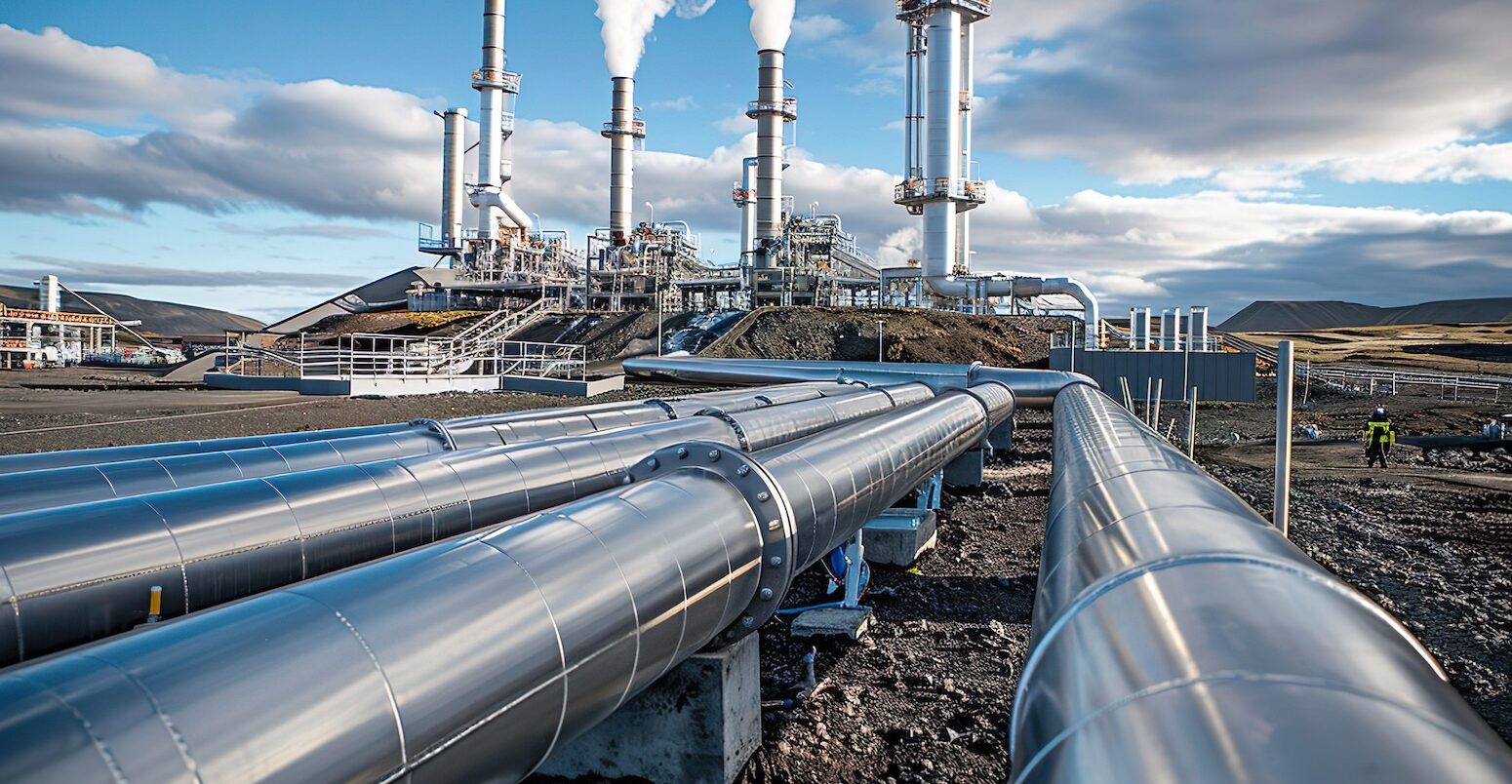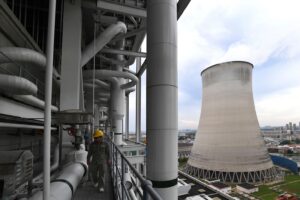
Guest post: How the role of carbon storage has been hugely overestimated
Multiple Authors
09.08.25Multiple Authors
08.09.2025 | 3:38pmRemoving carbon dioxide (CO2) from the atmosphere is widely expected to play a key role in meeting the goals of the Paris Agreement.
But this will only be effective for slowing climate change if the CO2 can be stored securely and indefinitely.
This requires “geological carbon storage”, where captured CO2 is injected deep underground, where it can stay trapped for thousands of years.
While the current deployment of CO2 removal (CDR) technologies around the world is small, almost all facilities aim to store captured CO2 in sedimentary basins.
However, in our study in Nature, we show that current policy approaches to using these formations on a larger scale could be suffering from a false sense of abundance.
We find that – once technical, social and environmental risks are considered – the world’s available reserves of geological carbon storage are significantly more limited than most estimates suggest.
Our research shows that, of nearly 12,000bn tonnes of CO2 (GtCO2) of theoretical carbon storage capacity, just 1,460GtCO2 is risk-free.
Significantly, we find that, if all available safe carbon storage capacity were used for CO2 removal, this would contribute to only a 0.7C reduction in global warming.
In short, geological carbon storage is not limitless – on the contrary, its practical potential is a rather scarce planetary resource.
From technical potential to prudent limits
When studies estimate where carbon could be stored for the long term, they typically start by looking at all sedimentary basins worldwide to find those that are mature and stable.
However, norms of international environmental law indicate that high standards of due diligence must be applied to prevent transboundary environmental harm. As scientists, we were therefore interested in understanding how much storage capacity would be available when looking through a precautionary lens.
Our study develops the first global estimate of safe and durable carbon storage that takes into account social, environmental and technical risks – in addition to the geological qualities of the basins.
Rather than taking raw geological capacity at face value, we screen the potential locations for a number of factors:
- Seismic hazards
- Groundwater contamination.
- Proximity to population centres.
- Biodiversity protections, such as environmentally protected areas and the Arctic and Antarctic circles.
- Engineering limitations, such as basin depths that are too shallow to store carbon indefinitely or too deep underground and locations too deep in the ocean.
- Political feasibility, such as maritime areas outside of national jurisdictions or disputed geographical areas.
The results of our assessment are stark. We find that, out of nearly 12,000GtCO2 of theoretical carbon storage capacity in sedimentary basins, just 1,460GtCO2 can be considered robust for climate planning purposes.
We refer to this as “prudent” storage capacity.
This is an order of magnitude less than commonly-cited figures.
In 2005, the Intergovernmental Panel on Climate Change’s (IPCC’s) special report on carbon capture and storage estimated that there is a “technical potential of at least about 2,000GtCO2…of storage capacity in geological formations”.
Over the two decades since, estimates have ballooned to 10,000-40,000GtCO2, depending on the academic or industry source that is consulted.
What this means for warming limits
Our research finds that if all reserves of “prudent” storage were used solely for removing CO2 from the atmosphere, they would enable – at most – a 0.7C reduction in global temperatures.
This falls to as little as 0.4C if we conservatively take the lower end of the likely (>66%) range of how much warming or cooling we expect per tonne of CO2 emitted or removed, respectively.
For the first time, our new study provides an estimate for an upper limit for how much past warming could be reversed through geological storage.
However, under most low-carbon pathways available in the academic and technical literature and assessed by the Intergovernmental Panel on Climate Change, this prudent geological storage limit would be used up before 2200 – and some by 2100.
In many cases, storage is not used to draw down atmospheric CO2, but to balance the continued production of greenhouse gas and carbon pollution from human activities.
And yet, without sharp near-term cuts in gross emissions, the likely overshoot of the Paris Agreement’s 1.5C warming limit could prove irreversible.
Equity and responsibility
The maps below show how prudent storage capacity – for offshore (left) and onshore (right) basins – is not evenly distributed.

Much of it is found in large, fossil-fuel-producing nations, such as the US, Australia, Russia and Saudi Arabia. These countries are among the world’s biggest historical emitters.
(This is not a coincidence, as these nations’ fossil-fuel-based economies are the result of relatively easily reachable geological deposits.)
However, the reality that the nations most responsible for emissions also appear best placed to store them raises equity concerns. Nations who benefitted from enabling carbon pollution would now also benefit from the clean up.
Other countries, such as Brazil and the Democratic Republic of the Congo, have substantial storage, but little domestic incentive to use it unless compensated.
Meanwhile, emissions-intensive nations would now be first in line to transform themselves from extractors to large-scale injectors of carbon – and could benefit from new business opportunities, often paid for by the public purse.
However, sovereign wealth funds – state-owned investment funds, often built on fossil revenues – could play a role in financing this shift, in line with the “polluter pays” principle.
Planning for scarcity
Treating storage as a finite and scarce resource has a knock-on effect for climate policy.
For example, governments would need to decide explicitly how they intend to allocate limited carbon storage capacity – should storage capacity be used to abate residual, industrial and fossil-fuel emissions, or for CO2 that has been directly pulled from the atmosphere?
Norms of international environmental law – and the recent “advisory opinion” on climate change from the International Court of Justice – provide guidance as to what countries ought to do. The principle of harm prevention indicates that risks of climate harm should be minimised where possible.
To limit risks to implementing climate targets, carbon capture and storage (CCS) should be seen as a complement to – but not a substitute – for rapid emissions cuts. This recommendation is not new – it has long been called for by researchers looking at the trade-offs and negative side-effects of specific negative emissions technologies, including the impacts poorly governed deployment of these technologies can have on biodiversity and food security.
Our geological storage estimate represents an assessment of reserves today – but this is likely to change with time as knowledge, preferences and governance of CO2 storage change.
CDR technologies that provide alternatives to geological storage, such as mineralisation in basalt, show promise. However, these technologies remain at pilot scale, with only a few million tonnes stored to date.
Climate strategies that rely on nascent CDR technologies would not constitute a strategy that minimises risks and potential harm to today’s and future generations.
The bottom line
Geological carbon storage is not a limitless backstop – and assuming otherwise puts the world at risk of irreversibly exceeding the Paris Agreement’s 1.5C threshold for global warming.
However, at the same time, carbon storage will almost certainly play a pivotal role in any future where global “net-zero” CO2 or greenhouse gas emissions is achieved.
By acknowledging the scarcity of carbon storage – and designating reserves for essential and strategic uses – governments can limit the risks of harm to people and the planet.
Gidden, M. et al. (2025) A prudent planetary limit for geologic carbon storage, Nature, https://doi.org/10.1038/s41586-025-09423-y





